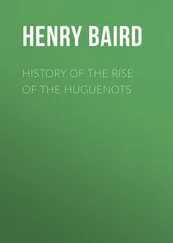Henry Fishwick - A History of Lancashire
Здесь есть возможность читать онлайн «Henry Fishwick - A History of Lancashire» — ознакомительный отрывок электронной книги совершенно бесплатно, а после прочтения отрывка купить полную версию. В некоторых случаях можно слушать аудио, скачать через торрент в формате fb2 и присутствует краткое содержание. Жанр: foreign_antique, foreign_prose, на английском языке. Описание произведения, (предисловие) а так же отзывы посетителей доступны на портале библиотеки ЛибКат.
- Название:A History of Lancashire
- Автор:
- Жанр:
- Год:неизвестен
- ISBN:нет данных
- Рейтинг книги:4 / 5. Голосов: 1
-
Избранное:Добавить в избранное
- Отзывы:
-
Ваша оценка:
- 80
- 1
- 2
- 3
- 4
- 5
A History of Lancashire: краткое содержание, описание и аннотация
Предлагаем к чтению аннотацию, описание, краткое содержание или предисловие (зависит от того, что написал сам автор книги «A History of Lancashire»). Если вы не нашли необходимую информацию о книге — напишите в комментариях, мы постараемся отыскать её.
A History of Lancashire — читать онлайн ознакомительный отрывок
Ниже представлен текст книги, разбитый по страницам. Система сохранения места последней прочитанной страницы, позволяет с удобством читать онлайн бесплатно книгу «A History of Lancashire», без необходимости каждый раз заново искать на чём Вы остановились. Поставьте закладку, и сможете в любой момент перейти на страницу, на которой закончили чтение.
Интервал:
Закладка:
The construction of the vallum was at the same time exposed, and showed that it was formed of boulder stones put together with cement. It lies 6 feet below the present surface, and is about 5 feet wide.
Upon this base was raised the rampart of earth well beaten down. Outside the vallum on the south–western side is a fosse (or dyke), of which the outer limit is about 43 feet from the vallum.
In 1888–89 this rampart was cut through in seven places. At one of these cuttings on the south–western side the vallum was found to be 4 feet 6 inches wide at the base, and inside it, at a distance of 4 feet, and level with the base, was found a layer of oak shingles – that is, pieces of split oak – each about 4 to 5 feet long, 2 or 3 inches thick, and 3 to 4 inches wide; these were placed at right angles to the vallum, and at about 7 inches apart, with their widest sides lying horizontally.
These shingles are pointed at the end next the vallum, and broader and squarer at the other end. In the second cutting near the western angle the vallum was found to be 6 feet wide, and below the base there was a layer of imported clay; below this was a layer of red sand 2 feet thick, and under that a quantity of gravel. Here again were found the shingles, of which there were three rows, all lying at right angles to the vallum.
The longest of these shingles were from 9 to 14 feet, and were those at the greatest distance from the vallum. Two other cuttings exposed two jambs of a gateway, and the layer of shingles was found to extend from the inside through the gateway to the length of 7 or 8 feet outside; they were larger and longer than any of the others. Under them was a layer of gravel 9 inches thick, and below this, again, a floor of oak planks, smooth and tightly jointed, and stretching across the gateway. Beneath this was another layer of gravel, under which were four large shingles about 14 feet long, 1 foot wide, and 6 inches thick, which were laid at right angles to the shingles above them. On the north–eastern side of the vallum was a strong oak post found standing upright, which appeared to have been a gate–post. In 1725 Dr. Stukeley, the antiquary, visited Ribchester at a time when a portion of the south–eastern boundary was exposed through the action of the river, and he mentions having seen “the floor along the whole bank,” which was no doubt made up of similar shingles. The use to which these oak shingles were put has not yet been satisfactorily settled, but the most probable theory is that they were intended to make sure the foundation of the path behind the rampart. They have not been discovered at any other Roman station in Britain. Another peculiarity of the Ribchester camp is the gates being placed in an angle of the quadrilateral instead of in the centre of one of the sides.
Outside the camp at Ribchester there was a settlement of considerable size and importance. There were at least two temples, the largest of which was probably over 100 feet long; it had sixteen pillars in front, and others around it, forming a peristyle. The inscription over the entrance (which was found some years ago) shows that it was dedicated “To the Deity: for the safety of the Emperor … and of Julia … the mother of our Lord [the Emperor], and the camps under the care of Valerius Crescens Fulvianus, his Legate [and] Pro–Prætor. Titus Floridius Natalis, Legate, our Præpositus and Governor, from the reply [of the oracle] restored the temple from the ground, and inaugurated it at his own expense.” The mention of the Empress Julia fixes the date to between A.D. 211 and A.D. 235. The four pillars forming the entrance to the Bull Inn at Ribchester were from the ruins of one of the two temples. The bases of some of the columns of the larger building are preserved at the Rectory; they are of rude workmanship, but appear to be in the Doric style.
This temple is believed to have been destroyed by fire. From the inscription just quoted it would appear that it was then rebuilt, and it is at least possible that the original building may have been destroyed by the Scots, who at this time waged fierce war with the Romans.
The evidence as to the existence of the smaller temple is not so conclusive, although several stone cylindrical columns, each with a foliated capital, said to have belonged to it, are still preserved.
Beside the “finds” of coins, rings, querns, amphoræ, etc., there have been from time to time sculptured stones brought to light which tell their own history. A few only of these can here be mentioned: a walling stone inscribed Leg[io] Vicesima V[alaria] V[ictrix] Fecit (The Twentieth Legion, Valiant and Victorious, made [it]); a large sculptured altar which bore an inscription “To the holy god Apollo Maponus for the welfare of our lord [the Emperor], and of the Numerus of Sarmatian horse Bremetennacum [styled] the Gordian, Antoninus of the Sixth Legion, [styled the] Victorious. [His] birthplace [was] Melitene.” The date of this is believed to be between A.D. 238 and A.D. 244. 26 26 Watkin’s “Roman Lancashire,” p. 133.
In 1603 Camden saw at Ribchester an altar which he describes as the largest and fairest that he had ever seen; this is now at Stonyhurst College. It was dedicated “To the goddess mothers, Marcus Ingenuius Asiaticus, a decurion of the cavalry regiment of the Astures, performs his vow willingly [and] dutifully to a deserving object.”
Altars dedicated to these Deæ Matres are not uncommon in Britain; they are often represented by female figures each bearing a basket of fruit. Another altar was dug up in the churchyard; its inscription refers to Caracalla and his mother Julia Domna (the widow of Septimius).
In 1796 a boy playing near the road leading to the church accidentally discovered a helmet, which its subsequent owner 27 27 Mr. Townley. See “Vetusta Monumenta,” iv. 5.
thus described: “The superior style of workmanship of the mask to that of the headpiece is also remarkable. It measures ten inches and a half from its junction to the skull–piece at the top of the forehead to its bottom under the chin. A row of small detached locks of hair surrounds the forehead a little above the eyes, reaching to the ears, which are well delineated. Upon these locks of hair rests the bottom of a diadem, or tutulus , which at the centre in front is two inches and a quarter in height, diminishing at the extremities to one inch and an eighth of an inch, and it is divided horizontally into two parts, bearing the proportionate height just mentioned. The lower part projects before the higher, and represents a bastion wall, separated into seven divisions by projecting turrets, with pyramidal tops, exceeding a little the height of the wall. These apertures for missile weapons of defence are marked in each of the turrets. Two arched doors appear in the middle division of this wall, and one arched door in each of the extreme divisions. The upper part of the diadem, which recedes a little so as to clear the top of the wall and of the turrets, was ornamented with seven embossed figures placed under the seven arches, the abutments of which are heads of genii. The central arch and the figure that was within it are destroyed, but the other six arches are filled with a repetition of the following three groups: a Venus sitting upon a marine monster; before her a draped figure with wings, bearing a wreath and palm–branch, and behind her a triton, whose lower parts terminate in tails of fish. Two serpents are represented on each side of the face near the ears, from whence the bodies of these reptiles surround each cheek and are joined under the chin. From the general form of the diadem being usually appropriated to female deities, and the circumstance of the lower division being composed of a wall and turrets in the same manner as the heads of Isis, Cybele, and the Ephesian Diana are decorated, added to the effeminacy and delicacy of the features of the mask, one may conclude that it alludes to these goddesses; but the manner in which the face is accompanied with serpents strongly indicates that it also comprises the character of Medusa…” The head portion of the helmet is ornamented with soldiers on horse and on foot. This is considered one of the finest specimens of a Roman helmet yet discovered. In 1875, in the bed of the Ribble, was found a sepulchral slab representing a horse–soldier spearing a fallen foe. The stone is 5 feet long and 2½ feet in breadth. 28 28 Abram’s “History of Blackburn,” p. 159.
Several other tombstones have been discovered here, the inscription on one of which, being translated, records that “In this earth is held that which was at one time Ælia Matrona; she lived twenty–eight years, two months, and eight days: and Marcus Julius Maximus her son; he lived six years, three months and twenty days: and Campania Dubitata her mother; she lived fifty years. Julius Maximus, a sigularis consularis of the Polish cavalry, the husband of an incomparable wife, and to a son most dutiful to his father and to a mother–in–law of very dear memory, has placed this.”
Интервал:
Закладка:
Похожие книги на «A History of Lancashire»
Представляем Вашему вниманию похожие книги на «A History of Lancashire» списком для выбора. Мы отобрали схожую по названию и смыслу литературу в надежде предоставить читателям больше вариантов отыскать новые, интересные, ещё непрочитанные произведения.
Обсуждение, отзывы о книге «A History of Lancashire» и просто собственные мнения читателей. Оставьте ваши комментарии, напишите, что Вы думаете о произведении, его смысле или главных героях. Укажите что конкретно понравилось, а что нет, и почему Вы так считаете.












